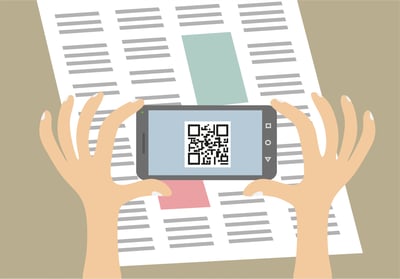

Is there a more difficult challenge for businesses to provide in today’s marketplace than efficient customer service?
Unless you operate in a niche where you truly are the “only game in town,” the quality and speed with which you provide customer service will often be the cause of your business swimming or sinking.
Think about it. When’s the last time you had a customer service issue of any kind with any type of service provider or solution. How did they handle it? Did they act in a way that resembles the following step-by-step process?
If so, according Corporate Visions, you probably left that interaction with a different feeling than you have come to expect from most customer service interactions. Maybe something like, I’d do more business with them, would recommend them to others, and I feel satisfied with my issue being solved.
So, assuming they apologized and worked out a favorable resolution to your problem, how quickly did they respond to your request? Instantly? Within a few hours? Longer than that? No matter how long it took, it probably wasn't as quick as you've have liked, which never feels great.
Below, we'll dive into the greatest customer service challenge today: a slow response time. Then, let's discuss how to solve this problem for your business while simultaneously future-proofing against having slow response time issues in the future.
Regardless of what apology procedure you and your team decide to follow, today’s on-demand culture has created an environment where customers want help, and they want it now. Impatience is human nature.
Sure, sometimes impatience is misguided, as are customers on occasion. However, regardless of whether or not the reason for their customer service issue is valid, you will remain in the wrong until you step up and respond.
Customer service response times set the initial baseline for how customers perceive the support they receive. Allowing a frustrated customer to stew is bad for business of all kinds. So, mitigating slow response times is critical in today’s on-demand world. Can’t resolve an issue with one email or one call, but you responded quickly? A recent survey found that the fastest customer service response time was one minute.
|
TIP: Worried your customers are walking away unsatisfied after an interaction with your brand? Go through our customer service statistics to see what areas you should be focusing on to tie up loose ends beyond communication timeliness. |
At one minute, you still have a frustrated customer and a problem, but if use the right apology process and respond quickly, the fallout is probably less severe.
Can’t resolve an issue with one email or one call, and you take the average response time of 12 hours? That's a big no-no. With a 12 hour response time, you probably have a refund or cancellation on your hands, and you now also have a very frustrated customer who has at least one social media account and would love to share that story.
Want to frustrate that customer even more? Wait even longer. The longest recorded time according to the above survey was eight days.
By the time eight days has rolled around, that customer has left you a review on at least one social media account and shared the story with their friends on and offline. By this point, refunding them is the least of your concerns. You have a much bigger problem on your hands.
So, how do you solve this slow customer service response time dilemma?
Because we all spend so much time on our devices, it’s easy to feel like the world of AI is already all around us. However, many businesses are failing to keep up with the times when it comes to serving their most valuable asset: existing customers.
Sixty percent of consumers are not getting their issues resolved during their first contact, and 44 percent hate waiting for a response by email, chat, or social media. Instead of relying so heavily on human customer service agents to provide a response in the order of which they are received, businesses have an alternative option to reduce customer service response times - partnering AI with their human teams.
Can Ozdoruk, Netomi’s VP of Marketing, says that AI-powered customer service solutions are growing in popularity in today’s fast-paced business world because they dramatically improve response times.
“With high quality AI, companies can dramatically improve their customer service response times. Happier customers ultimately make the bank, and AI-powered customer service solutions won’t break the bank. Today’s AI platforms can handle complex customer service dilemmas with solution-driven goals and the grace of a human, keeping businesses from needing to go on a hiring spree.”
|
TIP: Intrigued by Ozdoruk's insight? Maybe it's time to find the right AI platform for your company on G2. |
Depending on how severe your human agent response times are in your customer service department, you may not be able to simply throw more humans at the problem.
Although, if it really is taking you as long as eight days to respond to your customer service requests, you might want to consider an upgrade and expansion to your human agent staff.
Either way, truth be told, AI solutions can improve the response times of your customer service department without dramatically inflating your payroll.
Think about it. If your company can pair an AI-powered chatbot with your human agents to handle mundane, repetitive issues through chat, email, social networks, or through IVR, your existing human agents instantly become more effective.
Your average response times will also go down on a larger volume of your requests. You will probably even respond faster than the fastest response time in the SuperOffice survey. So much for needing to know the best way to apologize to customers, right?
Instead of providing service for the same issues over and over again, your human agents can invest their time in dealing with custom or escalated service requests, providing follow up service to your AI powered agents, and getting trained on how to improve their proactivity.
In today’s competitive, on-demand marketplace, it might seem that using AI for your customer service is just the newest way to keep costs streamlined or eliminate the need for investing in more human capital.
Instead, investing in AI to reduce your customer service response times may not only cut down on your time to first reply, but it may also enable your current human agents the ability to improve your customer’s loyalty because they will be able to meet the higher expectations of your consumers.
This probably isn’t the first time that you’ve read the argument in favor of leveraging artificial intelligence to improve your customer service response times.
It’s pretty common knowledge that AI solutions, like chatbots, are a great way to handle off-hour requests. Even in situations where your team is busy helping other customers, the arguments are pretty solid in favor of leveraging AI.
Consumers today have higher expectations than in the past. They want faster, more convenient resolutions, proactive service, and to avoid having to repeat themselves.
If you find your customer service teams constantly fighting to reach these goals for your business, then it’s almost a guarantee that your response times are impacting your success. For most organizations, overcoming these challenges and creating better customer service outcomes is both easy to accomplish and favorable to their retention goals.
However, it all starts with improving those response times. If your organization as a whole is prioritizing objectives such as producing upgraded or new products, handling repeat unhappy customers, focusing on upselling over retaining, or increasing brand awareness and other marketing strategies focused on new customers over improving customer service, then you may want to strongly consider improving your customer service procedures by adopting AI.
Making your customer service experience a positive thing can impact all of the above issues by creating a wider net of early adopters, eliminating unhappy customers, providing upsell opportunities, and creating positive brand reputation.
If your company is lagging behind the times on the technological front, you might find yourself underperforming in this critical customer service sphere. This and future year’s customer service challenges come down to one issue: improving response times. How can you solve that? By leveraging the power of artificial intelligence.
It's time to find the right artificial intelligence software to help you get on track with shortening your customer service response time.
Jonathan Bentz is a Senior Digital Marketing Strategist at Direct Online Marketing. His expertise in SEO, lead generation, and emerging web technologies has been featured in publications like Business.com, TheNextWeb, CIO Online, and Entrepreneur. Over his 15-year career in the digital marketing field, he has helped numerous IaaS and SaaS providers grow their sales pipelines by double digits year over year.
Humans like to feel in control.
 by Cristina Maria
by Cristina Maria
There is a disconnect in customer service.
 by Nanditha Vijayaraghavan
by Nanditha Vijayaraghavan
Digital survey sharing methods like SMS messaging, emails, web intercepts, and chat link URLs...
 by Vinod Janapala
by Vinod Janapala
Humans like to feel in control.
 by Cristina Maria
by Cristina Maria
There is a disconnect in customer service.
 by Nanditha Vijayaraghavan
by Nanditha Vijayaraghavan
Never miss a post.
Subscribe to keep your fingers on the tech pulse.
.jpg?width=400&height=150&name=jonathan-bentz-2018%20(1).jpg)


